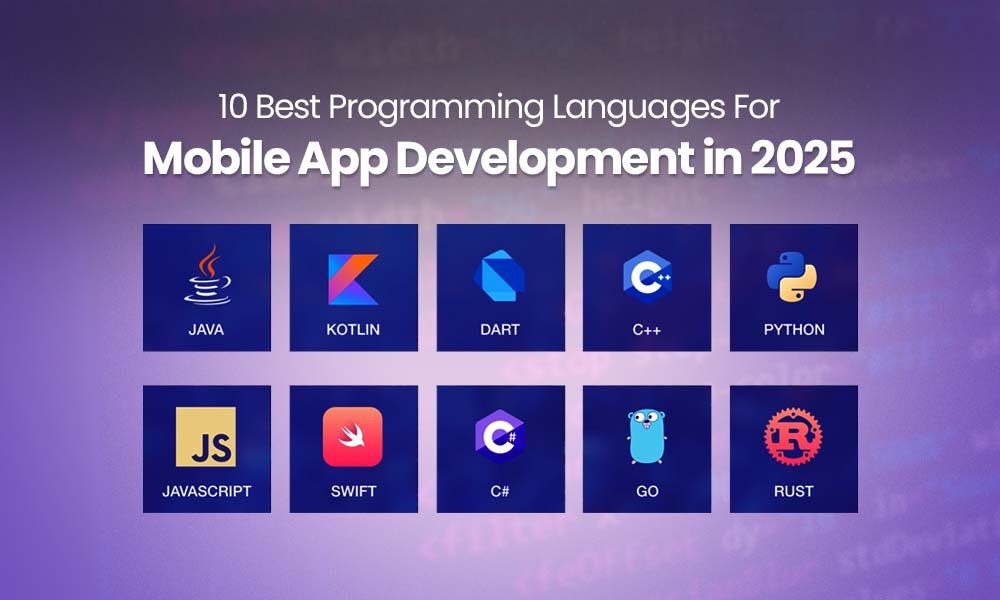
Choosing the right programming language for your app can make or break your project.
Let’s say you have a brilliant idea for an app. You sketch the screens, list the features, and feel ready to build. But then the big question hits—which programming language should you use? With so many options out there, it’s easy to feel overwhelmed.
Each language offers something different. Some are great for speed, others for performance. Some work better for iOS, others for Android. And if you’re targeting both? You’ll want flexibility and efficiency.
In this post, we’ll break down the 10 best programming languages for mobile app development. Whether you’re a business owner, new developer, or curious learner, this guide will help you make the right choice.
1. Java: The Veteran of Android Development
Java has been around for decades and remains a top choice for mobile app development, especially on Android.
Why? It’s reliable, well-documented, and supported by a massive developer community. Many of the apps you use daily—like Spotify or Twitter—have Java at their core.
If you’re planning a long-term Android app development project, Java gives you the foundation you need. It also supports scalability, which is essential as your app grows.
2. Kotlin: The Modern Java Alternative
Kotlin is a newer, more concise alternative to Java—and it’s officially supported by Google for Android development.
Developers love Kotlin because it reduces boilerplate code, which means faster development and fewer bugs. It’s also fully interoperable with Java, so you can use both languages in the same project.
For anyone looking to build a sleek Android app in 2025, Kotlin is one of the most efficient programming languages available.
3. Swift: The Go-To for iOS Apps
If your goal is to build an iOS app, Swift should be your first stop.
Created by Apple, Swift is clean, fast, and easy to maintain. It powers most modern iOS apps, from small startups to giants like Airbnb and LinkedIn.
Swift helps you build apps that are not just beautiful but also secure and high-performing. And as one of the key iOS app development trends, Swift is here to stay.
4. Objective-C: Still Kicking in Legacy iOS Projects
Before Swift, there was Objective-C. While it’s no longer the primary language for iOS, many legacy apps still use it.
If you’re working on maintaining or updating an older iOS app, knowing Objective-C is valuable. It may not be flashy, but it gets the job done—especially when paired with newer tools.
5. JavaScript: The Web Comes to Mobile
JavaScript isn’t just for websites anymore. With frameworks like React Native and Ionic, JavaScript lets you build cross-platform apps using a single codebase.
This means your app can run on both iOS and Android without doubling your workload.
It’s one of the most flexible programming languages for mobile app development, especially for startups and MVPs that need fast deployment.
6. Dart: The Power Behind Flutter
Google introduced Dart for its Flutter framework, and it’s quickly gaining traction.
Flutter apps are known for their smooth UI, fast performance, and native-like experience. Dart plays a key role in this by making development faster and easier.
If you’re chasing mobile app development trends in 2025, Dart + Flutter is a combo worth exploring.
7. C#: Microsoft’s Pick for Cross-Platform Development
C# powers Xamarin, Microsoft’s mobile app platform.
It allows you to write one codebase and deploy it to both Android and iOS. This reduces costs and makes app updates more manageable.
C# is also used in game development through Unity, making it a versatile option beyond mobile.
8. Python: Great for Backend and Prototypes
While not typically used for native mobile apps, Python is excellent for backend development and building app prototypes.
Its simplicity makes it ideal for quick development cycles and integrating AI or machine learning features. Apps like Instagram and Dropbox use Python in the background.
If your app involves data-heavy operations or quick MVP testing, Python fits well.
9. Ruby: Ideal for Backend Mobile Logic
Ruby, particularly with Ruby on Rails, is a strong backend option for mobile apps. It helps manage user data, transactions, and server-side logic.
While it’s not used to build the app interface itself, it powers many mobile app backends efficiently.
Ruby stands out for its developer-friendly syntax and fast launch times, making it popular for early-stage startups.
10. C++: For High-Performance Native Apps
Need your app to run fast with heavy processing? C++ could be your best bet.
It’s a powerful language often used in gaming, financial apps, or apps that need a lot of data processing. You can use C++ with Android NDK or integrate it into iOS apps with some tweaking.
While C++ takes more time to learn, it offers unmatched control over performance.
People Also Ask
Which programming language is best for mobile app development in 2025?
In 2025, Swift and Kotlin lead the way for native development. For cross-platform apps, Flutter with Dart and React Native with JavaScript are top choices.
Can I use Python for mobile app development?
Yes, but with limits. Python works best for backend systems and prototypes. For full native apps, other languages like Swift or Kotlin are better.
Is Java still good for mobile app development?
Absolutely. Java remains a strong option for Android apps, especially for larger projects or when working with existing Java-based systems.
What’s the easiest language to learn for app development?
JavaScript is beginner-friendly and useful across web and mobile apps. Dart (with Flutter) is also easy to pick up, even for non-developers.
Do I need to learn more than one language?
Not always. If you’re building a simple app, one language may be enough. But learning both frontend (like Swift or Kotlin) and backend (like Python or Ruby) will give you more flexibility.
Conclusion
The mobile app world is evolving, and choosing the right programming language is more important than ever.
If you’re building for Android, Kotlin offers speed and simplicity. For iOS, Swift gives you modern tools and a clean codebase. If you’re aiming for both platforms with fewer resources, cross-platform solutions like Dart and JavaScript make sense.
In the end, the best choice depends on your goals, your team, and your timeline. But by staying aware of the latest trends, you’ll build not just an app—but an experience users will love.
Before you dive into code, take time to explore your options. And remember—great apps start with great decisions.

